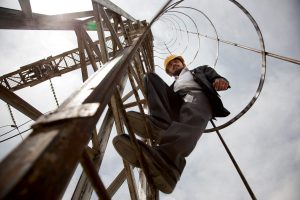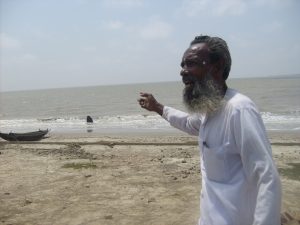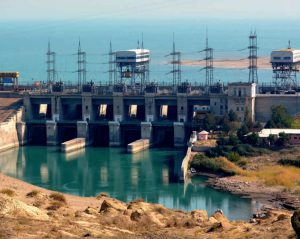Imagine a clean non-stinking Yamuna where people can walk or cycle along its banks, do some bird watching and relax under trees. The Delhi government wants to turn this pipe dream into a reality in the next two years. Pardon the average resident for scepticism.
The Yamuna is already a seriously polluted river when it enters Delhi and has about all its water taken away. By the time it leaves Delhi 22 km downstream, it is a stinking drain. India’s capital accounts for three per cent of the length of the Yamuna but over 70% of its pollution load. Untreated sewage and industrial effluents from 22 drains empty into the river in Delhi.
See Delhi’s worshipped and abused Yamuna river
Over the last three decades, nearly INR 2,000 crore (USD 297 million) has been spent cleaning the river. It has only got dirtier.
Now Delhi’s water minister Kapil Mishra and officials of the Delhi Jal Board (DJB) — the water distribution agency of the city — have designed the “Yamuna Turnaround Plan”. They say it is the first comprehensive plan to restore the river and its floodplains in a time-bound manner.
The plan, formulated after consulting engineers, water experts and environmentalists for six months, “looks at the river in a holistic way and covers all aspects to maintain the health of its ecosystem such as stopping the sewage and industrial effluents from entering into it, identifying all the point and non-point sources of pollution, ecological development of the riverfront, creating and reviving waterbodies for water recharge, creating public spaces for cycling, walking and recreation, even restoring the polluting drains that merge into the river,” says a DJB official.
The drains do have sewage treatment plants, but they do not work. The plan says they will be upgraded, so that they work. The plan also talks of creating ten reservoirs, desilting the river and the drains, creating 110 km of public spaces along the banks and ecological development of a 9,000-hectare riverfront.
It is going to cost INR 6,000 crore (USD 900 million). The Delhi government wants the centre to share the cost, and will present the plan to Uma Bharti, India’s water resources minister. She has a large pot of money meant to clean the Ganga and its tributaries, of which the Yamuna is the largest.
Despite the 45-degree Celsius summer, no resident of Delhi dreams of bathing in the Yamuna today; Minister Mishra had announced in September 2015 that he would do so within three years. On Friday, as the plan was finalised, he told thethirdpole.net, “This is the first time that any government has talked about Yamuna in terms of its ecology and biodiversity and said that this is the right model to clean the river. It is a very detailed and comprehensive plan with specific details for each step. So many plans have failed earlier and the people in this country cannot wait any longer. ”
Step by step
Officials who have prepared the plan say they have taken cues from the landscaping work done at Shanghai’s Houtan Park, the treatment of drains using wetlands at Osho Ashram in Pune and riverfront development along the South Platte in Denver. Minister Mishra says, “We have looked at positive case studies globally, but this is a very large-scale plan which has not been done anywhere before.”
Clearly, the Yamuna cannot be cleaned without the 22 drains being cleaned. The plan has a step by step process for this, with timelines on how to restore four major drains and how to bring sewage from the 18 smaller ones to treatment plants and wetlands that will filter the muck. Upgrading the sewage treatment plant on Najafgarh drain — one of the big four — will cost INR 1,400 crore (USD 207 million). Dredging it will cost INR 800 crore (USD 119 million) more. A further INR 500 crore (USD 74 million) will be spent building cycle tracks and walkways along the drain.
![The Yamuna in Delhi now [Image by Dilip Banerjee]](/wp-content/uploads/2016/05/Yamuna-27-g-2.jpg)
The riverfront and drains will also be dotted with biodiversity parks, planned as a mosaic of wetlands, grasslands and forests.
Ecologist C.R. Babu has had a big role in developing the plan. He told thethirdpole.net, “Right now there are hardly any trees on the banks of the river. There are natural trails that can be developed and people can use them. The whole idea is that concretisation or tiling shouldn’t take place on the riverfront. There is no need for that.”
The plan recognises that the Yamuna floodplains need to be free of encroachments and solid waste dumps. Encroachment has been a problem for long, and the issue flared up again recently when a private organisation held its anniversary celebrations on the floodplains.
See Yamuna floodplain devastated by festival
The Delhi government has been under pressure from the National Green Tribunal (NGT) to clean the Yamuna quickly. The tribunal has given specific directions as well.
Water activist Manoj Misra (no relation to the minister) from the Yamuna Jiye Abhiyaan (Long Live Yamuna) told thethirdpole.net there are several positives in the new plan. “It builds upon the NGT directions under the ‘Maily Se Nirmal (dirty to clean) Yamuna, Rejuvenation Project, 2015’. It considers restoration and rejuvenation of drains as integral to rejuvenation of the Yamuna. It has greater clarity on how it wishes to go about restoring the drains. It also admits that a single agency is required to implement the work.”
Where is the water
However, Manoj Misra has concerns as well. “While the drain restoration strategy is well thought out, the river flood plain restoration details are weak. The question of how to get environmental (water) flow back into the river remains unaddressed. The matter of industrial effluents entering the drains and reaching the river remains poorly addressed. The principle of zero discharge from the industrial areas is a must.”
Environmental flow is likely to be a contentious issue if DJB officials say they cannot supply water to residents without taking most of the water away from the Yamuna.
Manoj Misra says the river should be cleaned on priority. “It is an emergency situation. So the six-month time period given in the detailed project report should be reduced.”
Water activist Himanshu Thakkar from the South Asia Network on Dams, Rivers and People told thethirdpole.net, “The NGT gave action points in January 2015 but nothing has been done yet. All the plans have failed so far, mainly due to lack of accountability and good governance. This plan must incorporate this (issue). Existing sewage treatment plants are not functioning to their capacity due to lack of accountability. So this needs to be factored in.”
![<p>The Najafgarh drain, which flows into the Yamuna in Delhi, as it looks today (left) and as it is envisaged in the clean-up plan (right) [Image by Delhi government]</p>](https://dialogue.earth/content/uploads/2016/05/Yamuna_cleaning_plan.jpg)






